String Quartet No. 2 "Choros"
* * *
Full score, preface with footnotes & YouTube video:
https://blackpoolmusicgroup.blogspot.com/p/string-quartet-no-2-choros.html
* * *
A preface by the composer
The Brazilian "Choro" and the String Quartet No. 2
One normally associates with the term "Chôros" the twelve (surviving) orchestral, choral and chamber musical pieces by the great Brazilian composer Heitor Villa-Lobos (1887 - 1959), although a Choro in its original appearance refers to a popular form of urban street music, or serenade, from the 19th and early 20th century Rio de Janeiro, with its characteristically melodic, sometimes melancholic, yet very appealing and memorable tunes. They are also nowadays often played as purely instrumental pieces.
It is from this genre that the three main themes of my String Quartet No. 2 have been selected and given the work its title, rather than the occasional reminiscence of some of Villa-Lobos' typical compositional features, such as the "zig-zag" (bar 62), the unison ending of the work (bar 635) and, not least, the sweeping, wistful melodies (also termed Modinhas by Villa-Lobos) - which are often based on harmonic progressions of falling fifths, just as is the principal theme of the quartet in its original version.
Far from being a potpourri of Brazilian traditional music, the greatest focus of my String Quartet No. 2 lies in its formal construction, where all four sections are played without a break, thus forming one continuous movement. Whilst there have been famous forbearers of such single movement forms, namely Schubert's "Wanderer Phantasie", Liszt's B minor Sonata and Schumann's 4th Symphony, the merit of first fusing together the four movements of a sonata, chamber piece or symphony (i.e. 1st movement, Scherzo, Slow movement, Finale) with the four sections of the classical sonata form (Exposition, Development, Recapitulation, Coda) and the duality of tonic-dominant harmonic relations implied by the contrasting groups of themes (1st or principal group, 2nd or subordinate group), belongs to Arnold Schönberg (1874 - 1951).
Schönberg and the single movement forms
Even a genius like Schönberg - who was as much a skilful analyst of the great masters before him as he was a candid critic of his contemporaries - needed more than one shot before achieving a satisfactory condensation, or minimisation, of all the contents of what by the turn of the 20th century had become extremely large leviathans of music (some of Bruckner's and Mahler's symphonies last over an hour in performance - comprising, in Mahler's case, anything from two to six movements) into a single movement form.
His string sextet "Verklärte Nacht" op. 4 from 1899 still follows the two contrasting halfs set out in the poem by Richard Dehmel which gave the piece its name, despite all the motivic relations expressed within the thematic transformation and developing variation used throughout the piece.
The orchestral poem "Pelleas und Melisande" op. 5 (1902-03), on the other hand, already comes quite close to a single movement sonata form, albeit in a rather covert manner due to the restrictions set out by the actions contained in the scenes he selected from Maeterlinck's drama.
The first piece to present a formal "plan" of the one-movement structure - to be derived from Schönberg's sketchbooks of that time - is his 1. String Quartet op. 7 from 1904-05. However, so much detail was poured into each of the relevant formal sections, with so much counterpoint and motivic connection throughout, that the score confused no other than the great Gustav Mahler himself. With over 1200 bars and 50 minutes playing time it is therefore more than twice as large compared with my 2nd quartet.
The final and most condensed work from this early period of Schönberg's musical development was to be his Chamber Symphony No. 1 op. 9 (1906): Here, in little over 20 minutes, the composer managed to present a comprehensive four part symphony within a single movement sonata form, a reduction not just in size, but also in scale, as it was scored for just "15 solo instruments" - a clear opposite to the late romantic symphonies by Bruckner and Mahler. Yet there is an abundance of motivic connections and harmonic relations, despite a widening of the tonal scheme by introducing forth-tone and whole note harmonies, with Schönberg step by step replacing the traditional dominant-tonic cadence using the "Neapolitan" progression from F to E throughout the piece.
From this last major achievement of his early years Schönberg went on to compact his musical style into even smaller forms, abandoning the sonata form completely as well as all traditional harmonies, in favour of short pieces and the emancipation of the dissonance.
I do not believe that Schönberg had stopped pursuing the single movement sonata form because he thought to have hit a dead end. He rather wanted to move on to discover other more advanced forms of expression. His journey eventually led him - as we know - to invent the method of composing with twelve tones.
On the other hand, I am certain that the sonata principle still has scope for being explored and re-created even in our time - due to its ability to provide interest through contrast within its clear cut architecture. This conclusion had motivated me to structure the 2nd String Quartet exactly in that manner, by using pre-existing themes chosen from some of the popular Brazilian Choros mentioned above, developing them through variation and bringing them in line with the tonal relations between each section of the movement.
The concept of the String Quartet No. 2 "Choros"
Before we analyse the formal plan of this quartet in more detail, it is necessary to take a closer look at the melodic material that appears throughout the piece, and the way it befits the contrasting thematic groups of the sonata form.
According to Schönberg, simple folk tunes, i.e. popular tunes, cannot fit the requirements of larger forms, as they "do not produce new material, contrasts, subordinate themes etc.", nor must they "use the language of profundity", in order to remain popular. However, in case of the main theme - or main "Choro" - of this string quartet, which opens Part I., the motivic material turns out to be surprisingly varied and interconnected, as the following brief analysis may illuminate (After all, I believe, Schönberg has never been to Brazil, and his evaluation mainly talks about the folk music of Germany, Russia and other European countries.):
The tune starts with an opening "motto", which throughout the quartet is being placed at the start of the most important sections, such as the beginning of exposition and recapitulation of the 1. movement (part I.), the transitions to parts II. (Scherzo) and III., in varied form during the slow movement (part III.), and at the beginning of the Finale (part IV.) as well as during the Coda.
Theme a - the actual main theme of the quartet - generally appears not accompanied by its typical harmonisation of falling fifth chords, but in contrapuntal imitation, with few exceptions until the final coda. The theme does contain some of the most important motifs of the whole piece, x’ (which is a variation of the opening motto’s motif x), and y (which combines motif x’ with the characteristic leap of a third that also stems from the motto).
Themes b and c of this three partite Choro both incorporate an inversion of motif y (marked y''), but whilst b has a rather transitional character, theme c takes on the role of a subordinate theme within the whole structure. After a brief development and a compressed recapitulation, motifs a and b form a short transition leading – via the motto – towards the next part of the sonata model.
The musical material of Part II. (Scherzo) is derived from the A-section of the "Tango Brasileiro" Odeon. However, in order to attain the characteristic three-beat meter of a scherzo, and in order to occupy the necessary dominant region given to the second main group of the overall sonata form, both the rhythm and the key are changed from:
to (played pizzicato throughout):
Through this change, a sudden - and easily perceivable - connection is also being made with the x motif of the opening theme!
As a contrasting Trio-section to the scherzo, excerpts of the melancholic "Samba-Cancão" Último Desejo may show little connection with the previous thematic material, yet they are being elaborated quite extensively during the slow movement (Part III.), or central "Development" section of the quartet, in which nearly all the themes are being worked out.
Part IV. (Finale and Coda) first bring us the recapitulation of all previous themes in a Rondo-style, whilst - from the final recapitulation of the A'-section of the rondo - we hear the motto and the themes from the principal group in a rather more folkloristic setting, abandoning all previous polyphonic and imitative work, first (bar 495ff.) as a typical "Choro" from Rio the Janeiro, and then (bar 544ff.) in the lively style of "Frevo", the traditional Carnival music from the North East of Brazil, the region where the dedicatee of this String Quartet No. 2 was born.
The following table gives a detailed overview of the complete formal plan:
The greatest challenge within the overall formal aspect is - literally - to avoid "overcrowding", as we have seen in the example of Schönberg's op. 7. To try to squeeze in all necessary material whilst at the same time condensing the four movements of a symphony into a single movement sonata form is not dissimilar to solving a mathematical equation, with the different motifs and themes being the variables which are being placed and varied according to the stringent laws of the sonata principle.
Without any doubt, the work discussed here is by no means perfect and will neither offer a satisfactory nor a final solution to all the problems that have appeared during the compositional process. But it is hoped that it may showcase an idea of how the beautiful folkloristic music of Brazil may be used within the traditional and most aristocratic of all forms of European classical music: the sonata and the four movement symphonic cycle.
Alexander Kirsch
Blackpool, in May 2019
Parts:
I. • p. 1
II. • p. 13
III. • p. 29
IV. • p. 42
Duration: approx. 23 minutes
Full score, preface with footnotes & YouTube video:
https://blackpoolmusicgroup.blogspot.com/p/string-quartet-no-2-choros.html
* * *
A preface by the composer
The Brazilian "Choro" and the String Quartet No. 2
One normally associates with the term "Chôros" the twelve (surviving) orchestral, choral and chamber musical pieces by the great Brazilian composer Heitor Villa-Lobos (1887 - 1959), although a Choro in its original appearance refers to a popular form of urban street music, or serenade, from the 19th and early 20th century Rio de Janeiro, with its characteristically melodic, sometimes melancholic, yet very appealing and memorable tunes. They are also nowadays often played as purely instrumental pieces.
It is from this genre that the three main themes of my String Quartet No. 2 have been selected and given the work its title, rather than the occasional reminiscence of some of Villa-Lobos' typical compositional features, such as the "zig-zag" (bar 62), the unison ending of the work (bar 635) and, not least, the sweeping, wistful melodies (also termed Modinhas by Villa-Lobos) - which are often based on harmonic progressions of falling fifths, just as is the principal theme of the quartet in its original version.
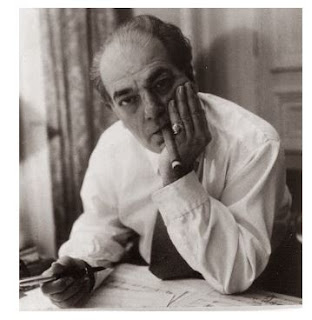 |
| Heitor Villa-Lobos, photographed by Sabine Weiss |
Far from being a potpourri of Brazilian traditional music, the greatest focus of my String Quartet No. 2 lies in its formal construction, where all four sections are played without a break, thus forming one continuous movement. Whilst there have been famous forbearers of such single movement forms, namely Schubert's "Wanderer Phantasie", Liszt's B minor Sonata and Schumann's 4th Symphony, the merit of first fusing together the four movements of a sonata, chamber piece or symphony (i.e. 1st movement, Scherzo, Slow movement, Finale) with the four sections of the classical sonata form (Exposition, Development, Recapitulation, Coda) and the duality of tonic-dominant harmonic relations implied by the contrasting groups of themes (1st or principal group, 2nd or subordinate group), belongs to Arnold Schönberg (1874 - 1951).
Schönberg and the single movement forms
Even a genius like Schönberg - who was as much a skilful analyst of the great masters before him as he was a candid critic of his contemporaries - needed more than one shot before achieving a satisfactory condensation, or minimisation, of all the contents of what by the turn of the 20th century had become extremely large leviathans of music (some of Bruckner's and Mahler's symphonies last over an hour in performance - comprising, in Mahler's case, anything from two to six movements) into a single movement form.
His string sextet "Verklärte Nacht" op. 4 from 1899 still follows the two contrasting halfs set out in the poem by Richard Dehmel which gave the piece its name, despite all the motivic relations expressed within the thematic transformation and developing variation used throughout the piece.
The orchestral poem "Pelleas und Melisande" op. 5 (1902-03), on the other hand, already comes quite close to a single movement sonata form, albeit in a rather covert manner due to the restrictions set out by the actions contained in the scenes he selected from Maeterlinck's drama.
The first piece to present a formal "plan" of the one-movement structure - to be derived from Schönberg's sketchbooks of that time - is his 1. String Quartet op. 7 from 1904-05. However, so much detail was poured into each of the relevant formal sections, with so much counterpoint and motivic connection throughout, that the score confused no other than the great Gustav Mahler himself. With over 1200 bars and 50 minutes playing time it is therefore more than twice as large compared with my 2nd quartet.
The final and most condensed work from this early period of Schönberg's musical development was to be his Chamber Symphony No. 1 op. 9 (1906): Here, in little over 20 minutes, the composer managed to present a comprehensive four part symphony within a single movement sonata form, a reduction not just in size, but also in scale, as it was scored for just "15 solo instruments" - a clear opposite to the late romantic symphonies by Bruckner and Mahler. Yet there is an abundance of motivic connections and harmonic relations, despite a widening of the tonal scheme by introducing forth-tone and whole note harmonies, with Schönberg step by step replacing the traditional dominant-tonic cadence using the "Neapolitan" progression from F to E throughout the piece.
From this last major achievement of his early years Schönberg went on to compact his musical style into even smaller forms, abandoning the sonata form completely as well as all traditional harmonies, in favour of short pieces and the emancipation of the dissonance.
I do not believe that Schönberg had stopped pursuing the single movement sonata form because he thought to have hit a dead end. He rather wanted to move on to discover other more advanced forms of expression. His journey eventually led him - as we know - to invent the method of composing with twelve tones.
On the other hand, I am certain that the sonata principle still has scope for being explored and re-created even in our time - due to its ability to provide interest through contrast within its clear cut architecture. This conclusion had motivated me to structure the 2nd String Quartet exactly in that manner, by using pre-existing themes chosen from some of the popular Brazilian Choros mentioned above, developing them through variation and bringing them in line with the tonal relations between each section of the movement.
 |
| Arnold Schönberg, self portrait, ca. 1910 |
The concept of the String Quartet No. 2 "Choros"
Before we analyse the formal plan of this quartet in more detail, it is necessary to take a closer look at the melodic material that appears throughout the piece, and the way it befits the contrasting thematic groups of the sonata form.
According to Schönberg, simple folk tunes, i.e. popular tunes, cannot fit the requirements of larger forms, as they "do not produce new material, contrasts, subordinate themes etc.", nor must they "use the language of profundity", in order to remain popular. However, in case of the main theme - or main "Choro" - of this string quartet, which opens Part I., the motivic material turns out to be surprisingly varied and interconnected, as the following brief analysis may illuminate (After all, I believe, Schönberg has never been to Brazil, and his evaluation mainly talks about the folk music of Germany, Russia and other European countries.):
The tune starts with an opening "motto", which throughout the quartet is being placed at the start of the most important sections, such as the beginning of exposition and recapitulation of the 1. movement (part I.), the transitions to parts II. (Scherzo) and III., in varied form during the slow movement (part III.), and at the beginning of the Finale (part IV.) as well as during the Coda.
Theme a - the actual main theme of the quartet - generally appears not accompanied by its typical harmonisation of falling fifth chords, but in contrapuntal imitation, with few exceptions until the final coda. The theme does contain some of the most important motifs of the whole piece, x’ (which is a variation of the opening motto’s motif x), and y (which combines motif x’ with the characteristic leap of a third that also stems from the motto).
Themes b and c of this three partite Choro both incorporate an inversion of motif y (marked y''), but whilst b has a rather transitional character, theme c takes on the role of a subordinate theme within the whole structure. After a brief development and a compressed recapitulation, motifs a and b form a short transition leading – via the motto – towards the next part of the sonata model.
The musical material of Part II. (Scherzo) is derived from the A-section of the "Tango Brasileiro" Odeon. However, in order to attain the characteristic three-beat meter of a scherzo, and in order to occupy the necessary dominant region given to the second main group of the overall sonata form, both the rhythm and the key are changed from:
to (played pizzicato throughout):
Through this change, a sudden - and easily perceivable - connection is also being made with the x motif of the opening theme!
As a contrasting Trio-section to the scherzo, excerpts of the melancholic "Samba-Cancão" Último Desejo may show little connection with the previous thematic material, yet they are being elaborated quite extensively during the slow movement (Part III.), or central "Development" section of the quartet, in which nearly all the themes are being worked out.
Part IV. (Finale and Coda) first bring us the recapitulation of all previous themes in a Rondo-style, whilst - from the final recapitulation of the A'-section of the rondo - we hear the motto and the themes from the principal group in a rather more folkloristic setting, abandoning all previous polyphonic and imitative work, first (bar 495ff.) as a typical "Choro" from Rio the Janeiro, and then (bar 544ff.) in the lively style of "Frevo", the traditional Carnival music from the North East of Brazil, the region where the dedicatee of this String Quartet No. 2 was born.
The following table gives a detailed overview of the complete formal plan:
The greatest challenge within the overall formal aspect is - literally - to avoid "overcrowding", as we have seen in the example of Schönberg's op. 7. To try to squeeze in all necessary material whilst at the same time condensing the four movements of a symphony into a single movement sonata form is not dissimilar to solving a mathematical equation, with the different motifs and themes being the variables which are being placed and varied according to the stringent laws of the sonata principle.
Without any doubt, the work discussed here is by no means perfect and will neither offer a satisfactory nor a final solution to all the problems that have appeared during the compositional process. But it is hoped that it may showcase an idea of how the beautiful folkloristic music of Brazil may be used within the traditional and most aristocratic of all forms of European classical music: the sonata and the four movement symphonic cycle.
Alexander Kirsch
Blackpool, in May 2019
Parts:
I. • p. 1
II. • p. 13
III. • p. 29
IV. • p. 42
Duration: approx. 23 minutes
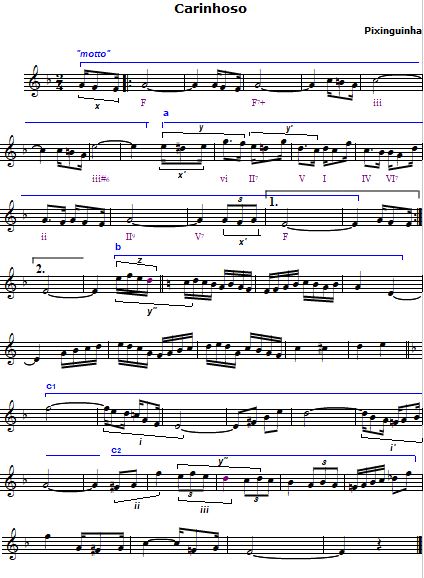
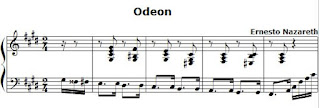

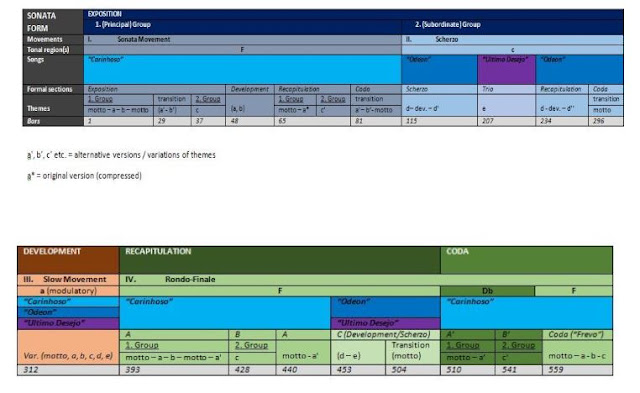
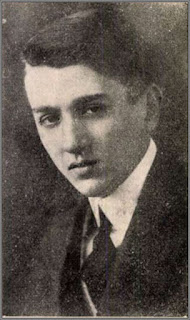

Comments
Post a Comment